As a professional organizer, I've worked with lots of families to create systems that transform chaotic routines into smooth, stress-free ones. With back-to-school season upon us, now is the perfect time to establish the foundation that will carry your family through the entire school year successfully. These three crucial parts make up the back-to-school success for families.
The secret isn't just organization-it's creating relevant systems for morning routines, evening preparation, and age-appropriate responsibilities that work together seamlessly. Let me share the strategies I use with my clients and my own family to create lasting change.
Jump to:
- Why Systems Matter More Than Organization
- Building Your Morning Routine Foundation
- How to Make a Fabulous Beverage Station that will amaze your entire family
- How to Organize a Kitchen Beverage Cabinet
- Organizing Kitchen Tips For Back To School
- Creating Visual Systems for Kids
- The Power of Evening Routines
- Preparing for Success: Night-Before Strategies for Busy Parents
- Make It Stick - Let's start on Sunday.
- Age-Appropriate Chore Systems
- Daily Cleaning Systems
- Daily Cleaning Checklist for Any Busy Parent
- Make It Sustainable: The 30-Day Rule
- Bottom Line
Why Systems Matter More Than Organization
After many years of working with families and raising my two kids, I've learned that there are many benefits to having a relaxing morning rather than a chaotic one. Some benefits include feeling more in control of your day, instilling healthy habits, and boosting the family's energy before leaving the house. But maintainable success requires more than just morning routines-it needs a complete system.
Your family needs these three components for a successful school year.
- Strategic morning routines that start your day calmly.
- Age-appropriate responsibilities are in place to build independence.
- Purposeful evening routines that prepare the family for the next day's success.
Building Your Morning Routine Foundation
You can start having your kids do some morning routines as early as five years old. At this age, they are familiar with going to school and having a structured schedule, so it will be easy for them to pick up new routines at home.
Start with Clear Goals
Before creating any routine (affiliate), ask yourself these questions when making your morning routine (affiliate):
- What do you want the kids to do in the morning?
- Are there chores that you want them to do?
- Are there things you want to get done in the morning?
- What do you want to accomplish to start your day off on the right foot?
Kitchen Organization for Morning Success
Your kitchen setup directly impacts morning flow. One thing that has helped my clients a lot is creating a beverage station. This beverage area should be located in a corner of the kitchen without blocking other central areas, such as the range, sink, and refrigerator. Relocate coffee and tea appliances and supplies, and other tools (affiliate) from other cabinets to the beverage area. This simple change means parents can prepare morning beverages without searching through multiple cabinets.
How to Make a Fabulous Beverage Station that will amaze your entire family
Having a beverage station in your home will organize all your drinks and glassware, allowing for an easy and relaxing morning routine. Let's create a beverage station in your home.
For families with school-age children, to instill independence, store items they will be using-plastic bowls, plates, and cups-in the lower cabinets so they can help themselves and also help put their stuff away in the kitchen. This builds independence while reducing your morning workload. Feel free to check out more organizing tips for your kitchen below to help you with Back to School Success for Families.
Creating Visual Systems for Kids
When you want your kids to remember all the tasks for the morning and evening, it's helpful to create a fun-looking reminder sign. Using bright colors and an easy-to-read font will give them a quick reminder without requiring much time to figure out what to do next. For maximum effectiveness, laminate the morning routine (affiliate) checklist (affiliate) to prevent it from getting wet when carried. They can even use a dry-erase marker to check off the tasks on the list once they're done.
Pro tip: When you first assign the tasks to the children, give them to them in an easy-to-follow order. 1. brush teeth, 2. take a shower, 3. get dressed, 4. bring backpack (affiliate) to the front door, 5. eat breakfast, 6. get shoes (affiliate) on, etc. This will show them the process without you having to handhold them through the more efficient way to spend their morning, instead of them walking back and forth from the bathroom to their bedroom to do tasks. Stay away from multitasking. At this age, keeping them focused on one task at a time is best.
The Power of Evening Routines
Evening routines are essential to help wind down the family. Your evening routine (affiliate) also supports your children by relaxing them and giving them time to decompress from the day.
Essential Evening Questions
To figure out how your evening routine (affiliate) will work for your family, you need to ask yourself these questions:
- What do your kids need to get done before going to bed?
- Which tasks will help your next day run more smoothly?
- What enables you to relax before you go to bed?
- What helps your kids relax before going to bed?
Sample Evening Routine Structure
Here's a framework I recommend to clients and use for my family:
6:30 PM - 7:00 PM: Have a light snack like popcorn
7:00 PM - 8:00 PM: Get what is needed tomorrow together and place it near the front door landing zone (this includes school supplies, signed papers, and sports equipment)
8:00 PM - 9:00 PM: Watch TV or read to relax
9:00 PM - 9:30 PM: Get ready for bed, brush teeth, etc.
Modifying the times and activities to your family's needs works best when creating a system that meets your family's needs.
Visit my post about the evening routine challenge to get more information.
By making evening routines, you are preparing yourself for the next day. It will help you wind down before bed and help control the stress of running around in the morning to gather these items together as well.
Preparing for Success: Night-Before Strategies for Busy Parents
Setting up the kids' evening routine (affiliate) is excellent, but you should also set up your evening routine (affiliate). Below are some key (affiliate) preparations:
- Empty the dishwasher the night before, so dirty morning breakfast dishes can be placed in it.
- Prep your meals the night before and set up the ingredients for dinner.
- Prep your kids' stuff for school or daycare the night before. Make lunches the night before.
- Pick an outfit for tomorrow and place it together in the closet.
Make It Stick - Let's start on Sunday.
To stick with your new healthy routine, it is best to start on a Sunday evening. Make your evening routine important for everyone and keep to the schedule. Include your tasks and things to prep for the next day as well. This is not just about teaching your kids new habits; it is also about showing them that you, too, can make changes. It takes time to set a new habit, so stick with it.
Age-Appropriate Chore Systems
One of the most significant transformations I see in families happens when children take on appropriate household cleaning responsibilities. A study published by the University of Minnesota indicated that giving kids household chores early can help build a lasting sense of responsibility, mastery, and self-reliance. The study also revealed that kids who started doing chores early (around 3 or 4 years old) were more likely to succeed academically.
Chores by Age Groups
Based on my experience, here are realistic expectations for the different age groups:
- Preschool (3-5 Years): Make Bed, put away toys, match socks (affiliate), feed pets, clean up their space after eating
- Elementary School (6-9 Years): Empty and load dishwasher, set the table, water plants, clean up their room, sweep floor, sort laundry, wipe counter
- Middle School (10-14 Years): Do laundry, mow the lawn/pull weeds, cook a meal, wash a dish, clean the bathroom, clean the floors
- High School (15-18 Years): Fold and put away laundry, make lunch, cook dinner, take out the garbage, iron their clothes, and clean the kitchen
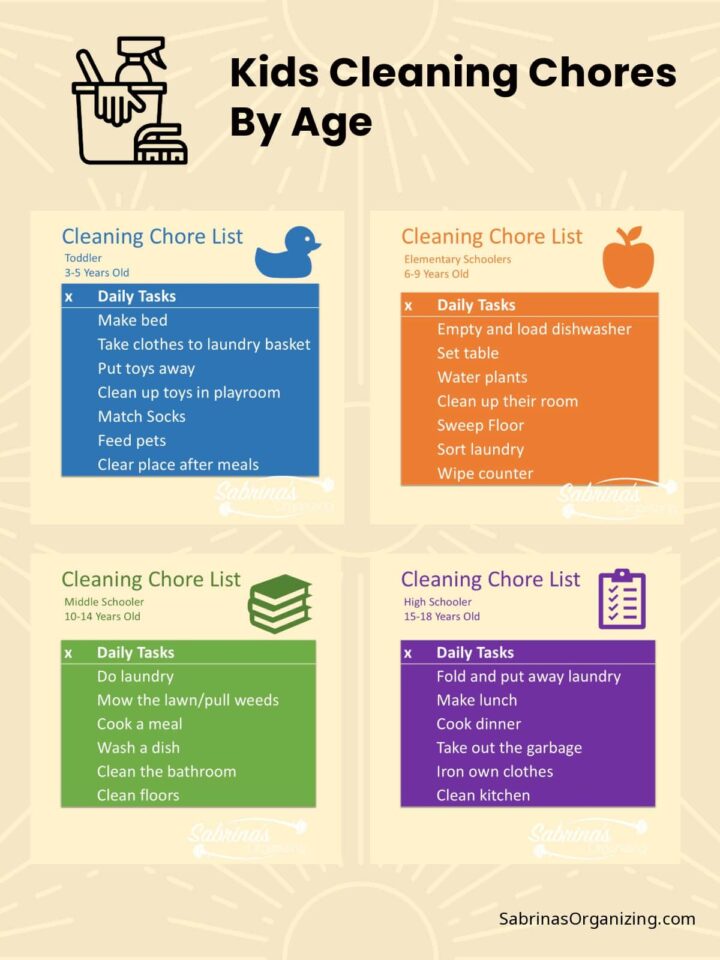
Visit my post that talks more about different chores for kids by age group.
Strategies That Work
From my experience, here are the most effective approaches:
- Work as a Team: Getting in the trenches with your kids will boost their morale. You can also use the time as an excellent opportunity to demonstrate how to complete tasks accordingly.
- Give Adequate Time: If a chore takes more than 15 minutes, you can allocate 30 minutes to it, which can reduce stress for them. It is essential to remember that children typically require more time to complete chores.
- Create Structure: There should be a set time when chores are to be done. It is essential to teach them to finish their chores before they can have free time, so they'll learn which tasks to prioritize.
- Never Use as Punishment: Your kids need to learn that a chore is an expected responsibility they must take care of, not a punishment for their mistakes and shortcomings.
Keeping these things in mind when creating your family's back-to-school success will help these new habits stick for everyone.
The original waterproof name label for kids and families.
Never lose your family's things again!
These Customized Labels are dishwasher and laundry-safe, with free shipping and a 100% satisfaction guarantee.
Check out my post: Incredible Tips on Labeling Kids' School Supplies, where I use these labels and give tons of tips!
Daily Cleaning Systems
Not just for weekends anymore, daily cleaning systems will clear these tasks from your schedule on the weekend to make room for more fun family activities.
To keep everything running smoothly, I recommend a weekly cleaning schedule that involves the whole family. Doing these tasks on weekdays or weekday evenings will free up your weekend time. These daily tasks should only take an hour to do daily if the room is somewhat organized and needs a quick clean.
Weekly Schedule Framework
Below is an example of how I broke up my cleaning tasks to make the weekend free.
- Monday: Bathroom cleaning day
- Tuesday: Living areas (living room, family room, dining room)
- Wednesday: Kitchen deep clean
- Thursday: Bedrooms
- Friday: Flexible/catch-up day
Below is one of my most popular posts that parents love, and I used it for years when my kids were younger.
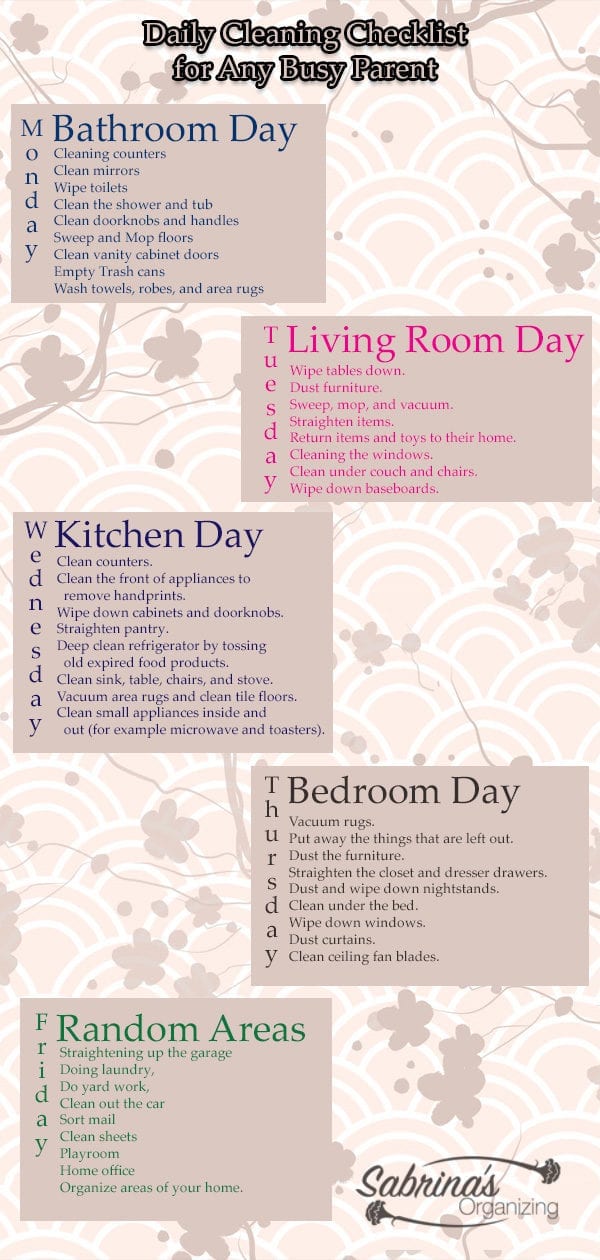
Make It Sustainable: The 30-Day Rule
It may take a month or even two to establish a new morning or evening routine, so be patient. Rest assured, a more relaxing routine is worth it for you and your family. I always tell my clients that consistency matters more than perfection during this adjustment period.
Your Action Plan - How to Start
Here's how to implement these systems immediately:
Week 1: Focus solely on establishing morning routines. Create visual checklists (affiliate) and practice the flow.
Week 2: Add evening routines while maintaining morning consistency.
Week 3: Introduce age-appropriate chores and responsibilities.
Week 4: Fine-tune all systems and address any challenges.
Bottom Line
I've seen that the most successful parents don't try to do everything at once. They build systems gradually, involve their children appropriately, and focus on progress over perfection. Be patient, it will work out, and your back-to-school success will happen with a bit of diligence.
The goal isn't to have a Pinterest-perfect home or robot-like children. It's to create systems that support your family's wellbeing and make school mornings something you can manage confidently rather than survive.
Ready to start? Choose ONE element from this guide to implement this week. Success builds on success, and small, consistent changes create the most significant transformations.
Sustainable systems take time to build, but they're worth every effort. Your calmer mornings, relaxing evenings, and more organized and clean home are just 30 days away.
How can I help? Feel free to check out my Virtual Organizing Consultations to find out how I can support you to organize your family's life.
Related Posts:
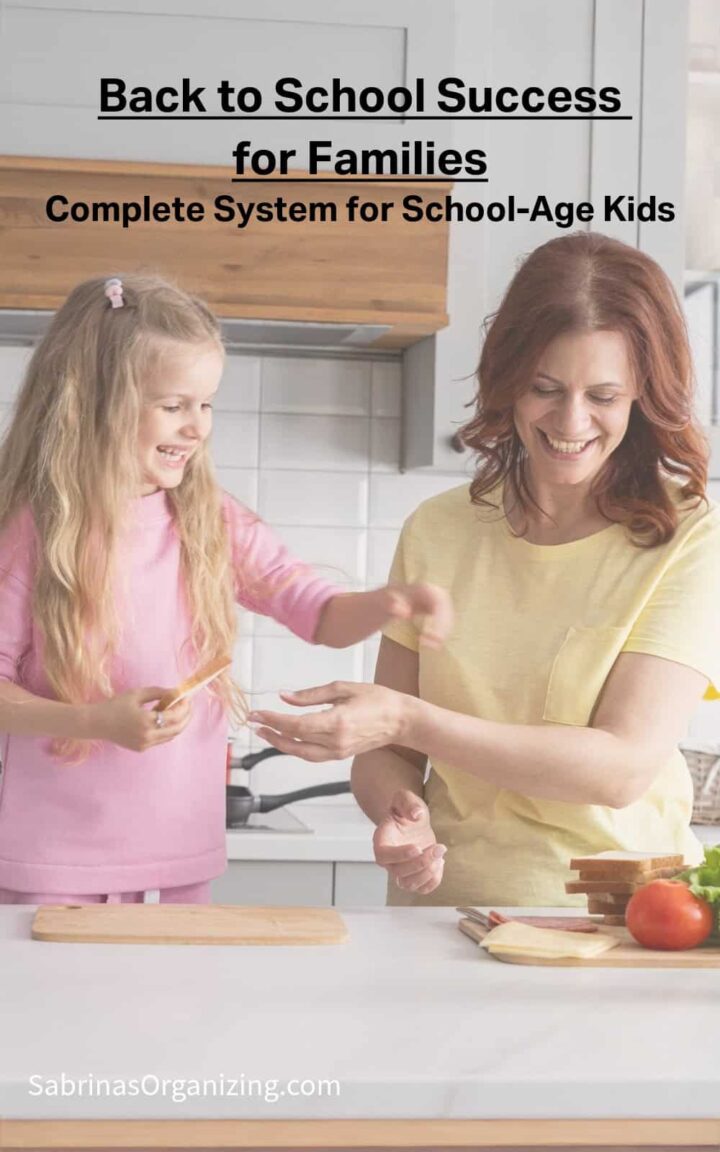



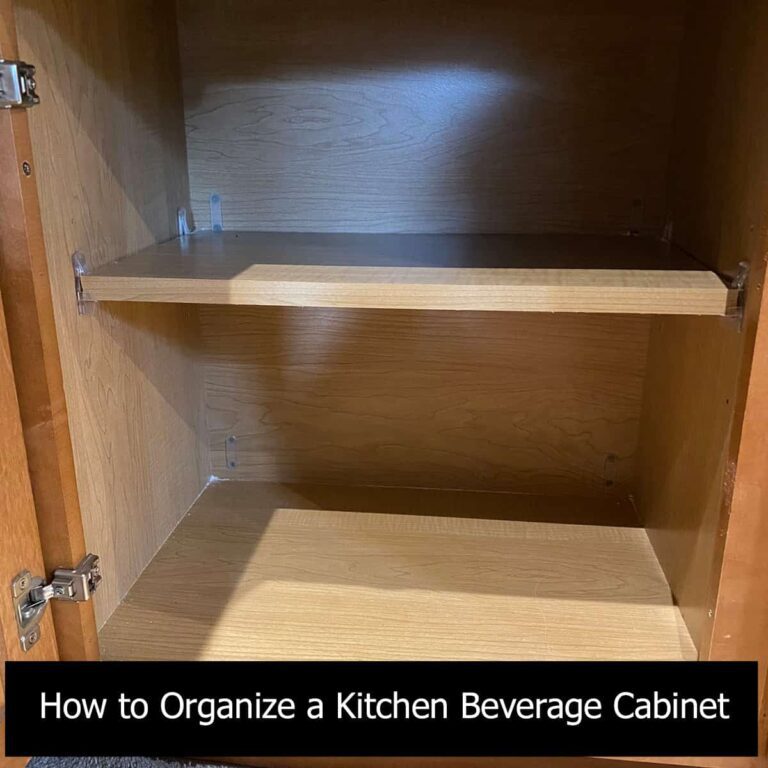
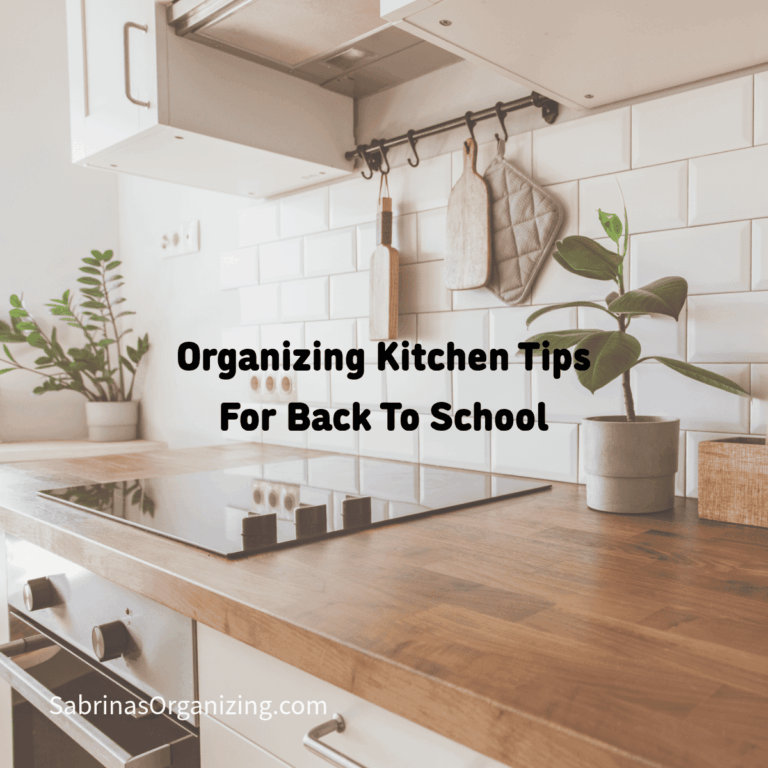



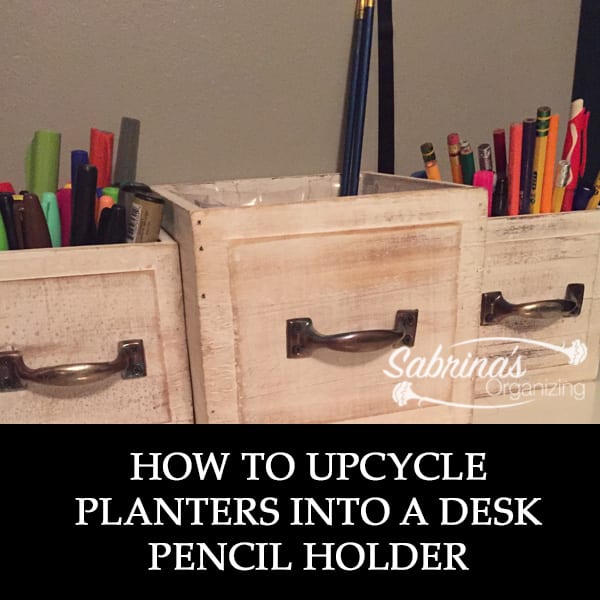
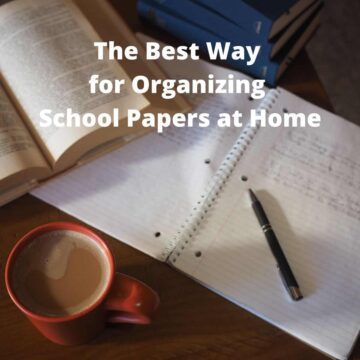
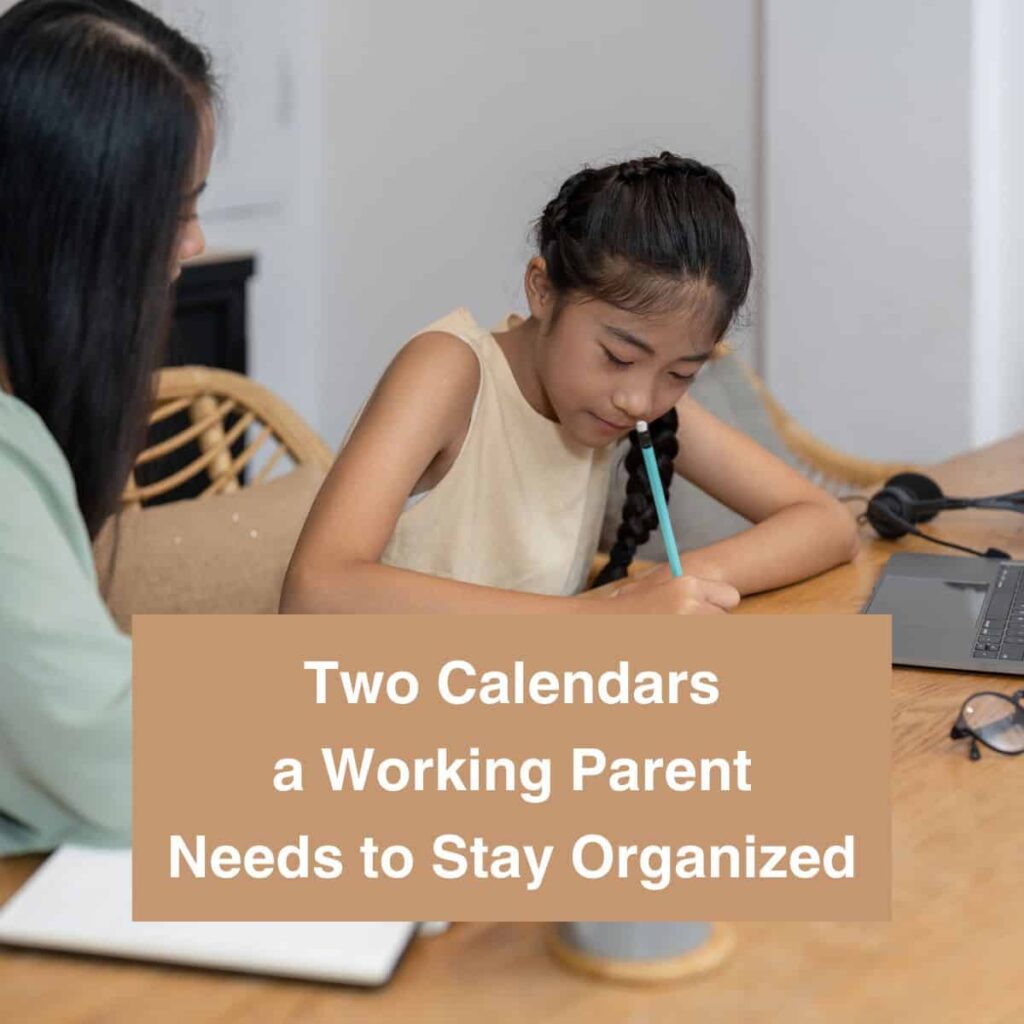
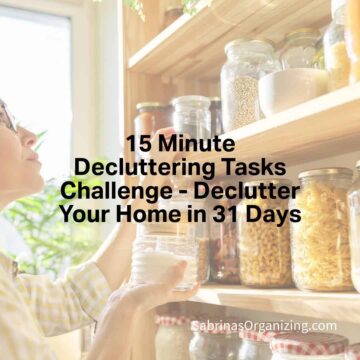



Julie Bestry says
I love the charts! I love anything that gives a visual nod to whatever everyone is supposed to be doing.
I'm a huge believer in routines, but I'll admit, this kind of lifestyle is very different from the one in which I grew up. I was responsible for my own room, parts of my bathroom, and drying dishes, and perhaps some ad hoc things to help. As none of us were morning people, I'm not sure I could have managed a "chore" in the mornings; I managed to get myself up, fed, and groomed once I was in middle school, but like now, that's the limit for activities before the brain warms up. (Perhaps I should start drinking coffee so I can caffeinate? I'd better build that beverage station!) So, all of my routines are in the evening so that morning means a clean kitchen, no laundry in the machines, and bags prepped to go. Good nighttime routines make for better sleep!
You've piqued my curiosity about one thing. What time are you eating dinner that 6:30p is snacktime? I eat more like a European, later and later, but even growing up, dinnertime for our family was about 6:15 p.m. Are you eating really early, or are you envisioning children eating before their parents?
Sabrina Quairoli says
Eating time is usually around 6:00 - 6:30 pm because there are activities that happen after that, 7-9 pm. Some Parents have kids eat later or right after activities. If activities are earlier, they usually eat around 8 pm. But it is really too late for kids to eat, then go to bed, and expect to be productive the next day. They don't have time to digest and wind down.
Linda Samuels says
I like your holistic approach to creating routines. You're not only thinking about how to help the family get up and out in the morning, but the other routines for later in the day.
The other aspect you mentioned, which also resonated is not trying to make ALL the changes at once. Build the routines slowly and add new ones as the intial ones are well established.
Thinking back to when our kiddos were young, we had a very long bedtime routine. The kids loved being read to (or reading to us.) Between the dinner, bathtime, and reading/bedtime, we treasured those sweet moments with them. I was aware at the time how precious those years were and rarely rushed through the chores or routines. I slowed myself down enough to enjoy and appreciate the time with our kiddos.
Seana Turner says
I'm definitely resonating with the power of routines. Routines help us to think less, which sounds silly, but it really helps when time (and maybe sleep) are in short supply.
Loving the charts to help us "see" what is reasonable. So many of us flourish with visual reminders and goals. It's true that even the little ones can do some things, if imperfectly. My girls used to have the alternating job of setting the table, and then clearing the table/setting up for breakfast. The one clearing used to also have to vacuum under the table until we got a dog - then the dog did that for us LOL!